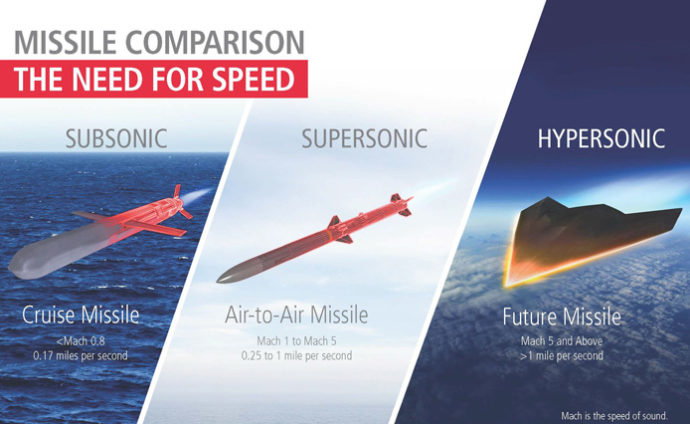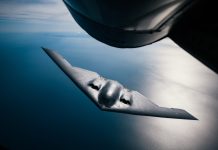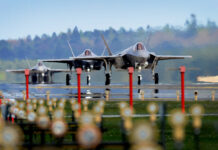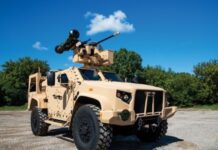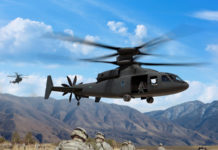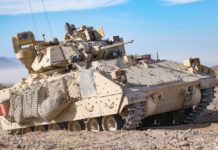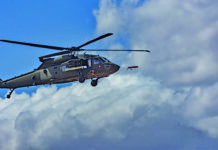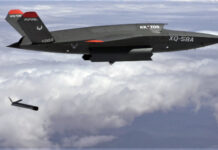Ground-Based Hypersonic Weapons
Sidney E. Dean
The two defining attributes of hypersonic weapons are flight speeds of at least Mach 5 (circa 6,000 kph), and in-flight maneuverability. These attributes make hypersonic weapons more difficult to detect and intercept than either conventional cruise missiles which are highly maneuverable but fly at subsonic speeds or ballistic weapons which achieve hypersonic reentry speeds but fly on a fixed, predictable trajectory.
There are two different categories of hypersonic weapons: Hypersonic Glide Vehicles (HGV) and Hypersonic Cruise Missiles (HCM). HGVs are launched atop a carrier missile, much like standard ballistic warheads; after separation from the missile, they transition to an unpowered glide mode for the rest of the mission. Compared to ballistic weapons, separation and transition to re-entry mode occur at a much lower apogee, making detection by long-range surveillance radars less likely. Once on track to target, they can repeatedly change course to evade air defence systems. Operational characteristics of HCMs for their part are similar to those of other cruise missiles, albeit at much higher speeds which are achieved through use of scramjet engines.
United States Hypersonic Aspirations
Their characteristics make hypersonic weapons particularly valuable in the context of major power conflicts, as well as in scenarios involving lesser powers which might own weapons of mass destruction or other mobile high-value targets which must be eliminated quickly. Several nations are currently pursuing hypersonic capabilities. Among western nations, the United States has the most advanced research, development, test and evaluation (RDT&E) programmes which could lead to operational weapon systems. The FY 2019 defence authorisation act accelerated development of hypersonic weapon systems, which the Pentagon now categorises as a priority. The US defence budget request for FY 2023 (1 Oct. 2022 – 30 Sept. 2023) would increase the hypersonic research budget to US$4.7Bn up from US3.8Bn in FY 2022. Additionally, funding for testing infrastructure for innovative technology – including hypersonics – is being boosted by US$800M. Congressional authorisation seems assured, as offensive and defensive hypersonic weapons programmes enjoy bipartisan support on Capitol Hill.
The Pentagon is currently pursuing RDT&E programmes leading to development of air-launched, sea-launched and ground-launched hypersonic weapon prototypes with shorter to intermediate ranges. All US research programmes are oriented toward non-nuclear weapon systems. This article will focus on ground-launched hypersonic weapon programmes.
US Army LRHW
The US Navy and the US Army are both pursuing HGV concepts customised to the respective services’ operational requirements. The Navy is responsible for the developing a common hypersonic glide body (C-HGB) to be manufactured by Dynetics; it is incorporated into both services’ weapons designs. In addition to the warhead, it will incorporate the guidance system, cabling, and thermal shielding. To complete the weapon system, the C-HGB will be paired with an 87.6 cm diameter, two-stage booster rocket to form a vertical-launch All Up Round (AUR) for use by both services. The C-HGB will not include an explosive payload but will destroy its target through the kinetic energy of the warhead’s high-speed impact. The chosen operational concept will require extreme precision, especially when contrasted to the option – under consideration by several nations – of deploying hypersonic missiles as theatre nuclear weapons.
While the Navy plans to deploy hypersonic weapons aboard submarines and destroyers, the Army is seeking a vehicle-based, ground-launched capability. Lockheed Martin is acting as systems integrator for the ground-based variant which is designated as the DARK EAGLE Long-Range Hypersonic Weapon or LRHW. The Army described the range as “well over” 2,775 km; speed is expected to reach just over Mach 5. According to the Army’s FY 2022 budget estimates justification book for RDT&E, the programme will “provide the Army with a prototype strategic attack weapon system to defeat A2/AD [anti-access/area denial] capabilities, suppress adversary long range fires, and engage other high payoff/time sensitive targets.”
Current planning calls for a LRHW battery to field four truck-mounted launchers, with each launcher carrying two missiles. A mobile battery operations centre, crane-equipped logistics vehicles for reloading the launchers, and various additional support vehicles will round out the unit. The Army plans to utilise the existing Advanced Field Artillery Tactical Data System (AFATDS) for command and control. The system can be airlifted into theatre by C-17 aircraft. While off-road capable, the tractor-trailer combination launch vehicle is approximately 24 metres long, with the inherent limitations on manoeuvrability. It is primarily intended to be road mobile, switching locations frequently to threaten enemy assets from varying directions while evading counterfires.
Testing and Fielding the LRHW
The first designated DARK EAGLE battery is assigned to the 5th Battalion, 3rd Field Artillery Regiment (5-3 FA) stationed at Joint Base Lewis-McChord, near Seattle, Washington. The 5-3 FA is part of the US Army’s 1st Multi-Domain Task Force (MDTF), which was formed in 2017 to test new technologies and operational concepts with a focus on defeating enemy A2/AA networks. The unit received its full complement of LRHW ground support equipment, including launcher vehicles, in 2021. The initial kit included inert training canisters in place of the AURs, which are still undergoing final development and testing. The training canisters have the same dimension and weight as the AUR, to allow soldiers to become accustomed to handling the weapon system under realistic conditions.
The 5-3 FA is expected to receive AURs during FY 2023 and achieve a limited operational capability by the end of that year. This would make the LRHW the first hypersonic weapon system to become operational with the US Armed Forces. That being said, the LRHW being delivered to the 5-3 FA in FY 2023 will still be classified as prototype. “Our goal is to deliver a prototype that soldiers can use and the mission requires that is deemed safe and that the Army can leverage as a potential baseline for a programme of record,” said Rob Strider, the civilian head of the Army’s hypersonics projects office, in October 2021.
Testing and evaluation of the LRHW in its full AUR configuration will continue through late FY 2022, with a final certification test flight likely to be conducted in the second quarter of FY 2023. In November 2021, Lt. Gen. L. Neil Thurgood, the US Army’s Director of Hypersonics, Directed Energy, Space and Rapid Acquisition, stated that these advanced tests will be conducted by personnel of the 5-3 FA. “Those flight tests will actually be done by the unit,” Thurgood said. “They’ll come to the flight test, they’ll shoot off of their equipment and we’ll use those flight tests to train the unit as they get ready for the completion of their fielding.” Having operational personnel conduct the advanced testing is intended to ensure that all field-relevant factors are considered when evaluating the weapon system’s performance.
Transition from a developmental and evaluation programme to an acquisition programme of record is planned for FY 2024. The second and third batteries are to be fielded, respectively, in 2025 in Germany and 2027 at a yet undetermined Pacific theatre location. To date a total of five batteries are planned, one for each of the Army’s Multi-Domain Task Forces. Acquisition plans beyond these five batteries have not been finalized. Technology insertion upgrades for the fielded LRHW mission systems have already been planned for both 2026 and 2027; planned upgrades include the ability to remotely reprogramme or update targeting data after launch, to enable engagement of moving or relocated targets.
DARPA OpFires
The Defense Advanced Research Projects Agency (DARPA) is pursuing multiple hypersonic research programmes. One of these, conducted in conjunction with the US Air Force, is an ongoing test series of an air-launched Tactical Boost Glide (TBG) hypersonic vehicle with a Mach 7+ capability. DARPA’s Operational Fires or OpFires programme leverages some TBG technologies to develop a medium-range ground-launched tactical system. In February 2022, Lt.Gen. Thurgood confirmed that the Army’s Rapid Capabilities and Critical Technologies Office is also involved in the project.
The government has partnered with Lockheed Martin as prime contractor. The first two programme phases ran 2018–2020 and involved design and refinement of the booster system, including static fire tests. Of note is OpFires’ second-stage booster motor developed by Aerojet Rocketdyne. It can be throttled or turned off on command, a novelty on solid fuel motors. This has the advantage of enabling the weapon to rapidly and directly strike targets well short of its maximum range without having to perform bleed-off flight manoeuvres.
The third and final phase of the RDT&E programme is dedicated to weapon system integration and runs through the end of FY 2022. It will culminate in integrated end-to-end flight tests to demonstrate system-level critical design maturity. DARPA did not request funding for FY 2023, implying the goals of the research will have been reached. The first flight test was conducted on 13 July 2022 at the White Sands Missile Range in New Mexico. OpFires was launched from a US Marine Corps (USMC) logistics truck utilising a US Army artillery fire control system. According to a DARPA press release, the test demonstrated integrated technology maturation of key enabling components including the first stage rocket motor, missile canister, and missile round pallet (MRP). “Our successful agile hardware development approach prioritises full-scale flight testing that will inform further design maturation this year,” said Lt. Col. Joshua Stults, DARPA programme manager for OpFires.
There are no current plans for an acquisition programme of record, although this could change. With a presumed range of circa 1,600-1,800 km or more, Opfires would be well suited to replace the Army Mid-Range Capability (MRC) weapon system which is expected to enter service in late FY 2023.
OpFires could be deployed by both the Army and the USMC. The off-road capable system could be transported per C-130 or by amphibious landing craft to prepared and unprepared launch zones in order to maximise tactical flexibility. The launch containers can deploy on and fire from 10×10 logistics trucks already used by the Army and USMC, without special equipment. Nor does a battery require radars or other specialised support vehicles. This would make it particularly attractive to the USMC which is developing highly mobile littoral combat regiments optimised for fast insertion and extraction of a variety of small units including rocket and missile artillery. Unlike the LRHW, OpFires is not restricted to kinetic effects, but can accept a variety of payload options, making it suitable for a broad range of hard and soft targets.
Asian Developments
Both Japan and South Korea are developing vehicle-mounted hypersonic ground-based weapons. Tokyo announced its plans in May 2020. The Hyper Velocity Gliding Projectile (HVGP) will be boosted by a solid-fuel launcher and will be configured for both land-attack and anti-ship missions. The land-attack payload will consist of multiple explosive formed projectiles designed for area suppression. The anti-ship payload will carry an armour-piercing warhead specifically configured to defeat enemy aircraft carriers and other large-deck vessels. Plans call for a 90° terminal angle of attack to maximize effect on ships. The weapon is expected to have a minimum range of several hundred kilometres.
Development is planned in two phases. The Block I variant will be a comparatively simple design utilising existing missile technology in order to accelerate fielding; prototypes will be tested by Japanese army units. An early operational capability could be fielded on Okinawa as early as 2026 as a front line of defence for the Senkaku islands the nation’s Nansei island chain, which stretches some 1,200 km between southern Kyushu and Taiwan; these 198 small southwestern islands include the Senkaku Islands, which are also claimed by China. The Block II variant will be developed using advanced technologies and carry more sophisticated payloads, in what the Japanese MoD has described as a “game changer.” Among other advances, the Block II warhead will have a curved beak or “waverider” shape which gains lift through the shockwave generated at the weapon’s bow; this will boost speed and range. The ability to strike moving targets such as ships could be introduced with this variant in the late 2020s/early 2030s.
In a separate endeavour, Japan’s defence ministry is currently testing scramjet technology to be used in a future hypersonic cruise missile. The weapon is expected to enter service circa 3030, with an improved version available by 2038, but the ministry has expressed interest in accelerating this timeline.
The Republic of Korea (RoK), for its part, presented the model of its Hycore hypersonic weapon technology demonstrator in December 2021. The MoD had announced in 2020 that it recognised a hypersonic weapon requirement as a strategic deterrent against North Korean WMD threats. Unlike Japan or the United States – which are developing HGVs as their ground-based systems – the RoK intends to deploy a ground-based hypersonic cruise missile. The HCM will be launched from a transporter-erector launcher (TEL) using a two-stage solid fuel booster rocket and is expected to reach Mach 6.2. The technology demonstrator being developed with participation of Hanwha Aerospace, will not have a warhead. Instead, the ramjet powered HCM will mount numerous sensors to collect data during the flight tests, which are expected to be conducted through 2023.
European Interest
France and Germany are taking a different tack with regard to ground-based hypersonic weapons. The future Main Ground Combat System (MGCS) being jointly developed by both nations as a main battle tank replacement is expected to carry a hypersonic effector.
MBDA, acting as MGCS prime contractor, is pursuing the hypersonic weapon development. Few official details of the classified programme have been released. First public discussion of this topic dates to a 2019 newspaper interview given by Peter Heilmeier, the then marketing and business development manager for MBDA Deutschland. He revealed that the German MoD’s acquisition agency BAIINBw had initiated a foundational research programme in 2018 to investigate the viability of hyperspeed weapons for various applications. Heilmeier postulated, among other things, that ground-launched hyperspeed projectiles would be optimal for defeating reactive armour on enemy tanks.
While the US Army’s LRHW seems poised to become the first operational ground-based hypersonic weapon fielded by a Western nation, other services seem determined to follow within a decade. Together with air- and sea-launched variants, hypersonic systems will become integral components of those armed forces whose nations enjoy the technology base and the financial resources to develop them. L




